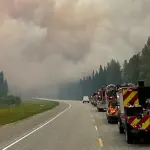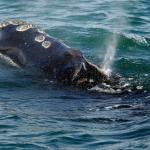This is the North Atlantic right whale, of which only about 370 remain. The whales give birth in the southeastern United States in winter and spring and migrate north to New England and Canada to feed.
Along the way, whales face dangers such as ship collisions and entanglement in commercial fishing gear. Environmental groups have long criticized the U.S. and Canadian governments for not doing enough to protect these critically endangered animals.
Canada is implementing mandatory whale protection measures this summer, Transport Canada said in a statement on June 27. All vessels 13 meters (42.7 feet) long or longer must comply with speed restrictions in designated areas of the ocean to avoid collisions with whales, the agency said.
Transport Canada is also requesting voluntary speed reductions in other parts of the ocean. The restrictions reflect the agency's commitment "to the protection and conservation of endangered North Atlantic right whales," the agency noted.
Transport Canada has been taking steps to help protect this iconic species from vessel strikes in the Gulf of St. Lawrence, a high-traffic area where right whales are often seen, the statement said.
The restrictions are being implemented at a time when scientists are expressing concern about the lack of reproduction among right whales. The New England Aquarium in Boston said earlier this year that this year's breeding season produced only 11 mother-calf pairs. US Government officials have said the whales need at least 50 calves per season to begin recovering the population.
The U.S. government decided earlier this year to withdraw a proposal that would have required more ships to reduce speed in East Coast waters to protect the whale. The move came in the final days of President Joe Biden's administration, and federal ocean managers said there was no way to implement the rules before President Donald Trump took office in January.
The whale was once abundant on the East Coast, but was decimated long ago during the era of commercial whaling. It has been protected under the U.S. Endangered Species Act for decades, but has been slow to recover.








